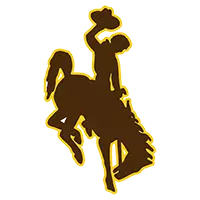Wyoming at CSU (Saturday 2 p.m.) MWN
- By Ian McMackin
- Hells Half Acre
- 1 Replies
Cowboy Head South for Border War Contest Against Colorado State
Contest starts at 2 pm.
Contest starts at 2 pm.
LARAMIE, Wyo. (Feb. 13, 2025) – The Wyoming Cowboys head south to battle Colorado State in the second edition of this season’s Border War on Saturday afternoon in a 2 p.m. start inside Moby Arena in Fort Collins on the MW Metwork. The Rams took the first contest of the season in Laramie.
Fans can watch and listen to the contest, as well as follow stats on GoWyo.com. The game will be broadcast live on radio over the 26 affiliate stations of the Cowboy Sports Network, as Keith Kelly will be on the call alongside Kevin McKinney.
About The Teams
Wyoming heads into the contest with a 11-14 overall record and a 4-10 mark in conference play after falling to MW leader New Mexico 71-67 on the road on Wednesday. The Pokes are shooting 35.1 percent from behind the arc this season for fifth in the conference. In MW games, the Pokes are shooting 36.6 percent from the arc for third in conference games. The Pokes are shooting 44.5 percent from the field with opponents shooting 43.6 percent. The Cowboys are grabbing 35 rebounds per game and are +2.0 on the glass this season.
The Rams head into the contest with a 15-9 overall record and a 9-4 mark in conference play after falling on the road at Utah State 93-85 on Tuesday. Colorado State is shooting 46.1 percent from the field and average 8.1 threes per game, Defensively, CSU allows opponents to shoot 42.7 percent from the field and 35.7 percent from behind the arc. The Rams are shooting 78.4 percent from the free throw line for first in the conference and No. 16 in the nation.
About The Players
The Cowboys are led by Obi Agbim at 17.8 points per game for third in the conference. He is shooting 44.7 percent from behind the arc to lead the league and rank No. 12 in the nation. He leads the team with 3.4 assists per game to rank No. 12 in the MW. Jordan Nesbitt added his eighth double-double of the season against Fresno State to rank third in the MW and No. 38 in the nation. He adds 8.6 points per game and 7.2 rebounds per night to lead the team and rank fourth in the MW. Kobe Newton adds eight points per game and has made 39 threes for the season. He missed the last contest with an illness.
Colorado State is led in scoring by Nique Clifford at 17.7 points per game for fourth in the MW. He also adds 10 rebounds per game, which ranks second in the conference. He is shooting 48.3 percent from the field and leads the team with 97 assists. Jalen Lake adds 11.9 points per game and has a team-high 47 three-pointers for the season. Kyan Evans adds 9.1 points per game and has 72 assists on the season.
About The Series
The Cowboys and Rams will meet for the 244th time on Saturday. Wyoming leads the all-time series 139-104 and hold a 54-61 mark in Fort Collins. The Rams took the first contest in Laramie by a score of 79-63 on Jan. 18.
Up Next
Wyoming returns to the Arena-Auditorium opening a two-game homestand starting with Air Force on Tuesday at 6:30 p.m.

